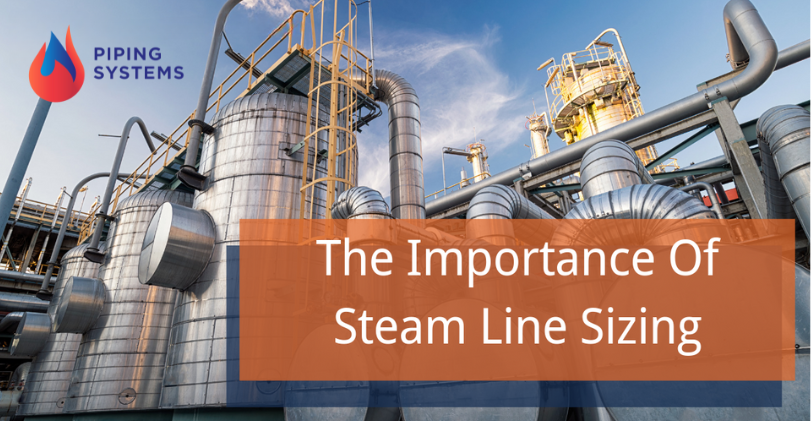Published June 3, 2019

When it comes to a steam system, every aspect of design, installation, and even maintenance is critical for a long duty cycle.
One of the key factors in the design of the system is to ensure the correct steam line sizing. This is a critical decision and one that can have a significant influence on the efficiency of the system. A common mistake is to choose each component on its own, while the correct design and material choice method is to look at the system as a whole.
The final volume of steam through the system is controlled by the smallest size of steam line used throughout. In this way, the choice of the correct steam line size at each section of the system is vital to overall pressure that can be obtained at the end application. It is also essential to consider the natural stream pressure drop that occurs at each restrictive point in the system. The greater the number of these restrictive points, the more compensation needs to be considered further up the system.
When considering steam line sizing throughout the system, it is important not just to focus on the actual pipe size itself. Remember, each valve, flow meter, elbow, or even drops in pipe sizes for branch lines impact the volume of steam and the pressure at the endpoint in the system.
Additionally, the quality of the interior of the steam pipe, the internal roughness of the pipe, also has an effect: the smoother the interior, the less the pressure drop over the distance of the pipe.
As a general guideline, sizing up or oversizing of steam systems, including condensate lines, is not an issue. The only problem for the system occurs with undersizing, which results in a diminished performance of the system.
Undersizing has several negative impacts. One is the need for increased steam velocity to provide the necessary amount of steam at the endpoint(s). When this happens, and the velocities of 10,000 fpm or greater occur, there is a higher level of entrained moisture in the steam, which decreases the quality. The line pressure also drops, which results in earlier failure in the system due to high moisture levels that increase corrosion and erosion of components in the system.
Additionally, water hammer, more noise through the system, and greater need for maintenance all become issues to consider.
Different types of steam systems require different velocities for optimal performance. Knowing those required velocities, and then calculating pressure drop, is essential in choosing the corresponding pipe size to meet the needs of the system. Remember, oversizing is an option to consider. While it does add to the cost of installation, it provides protection from undersizing issues, which also add to the cost of operation.